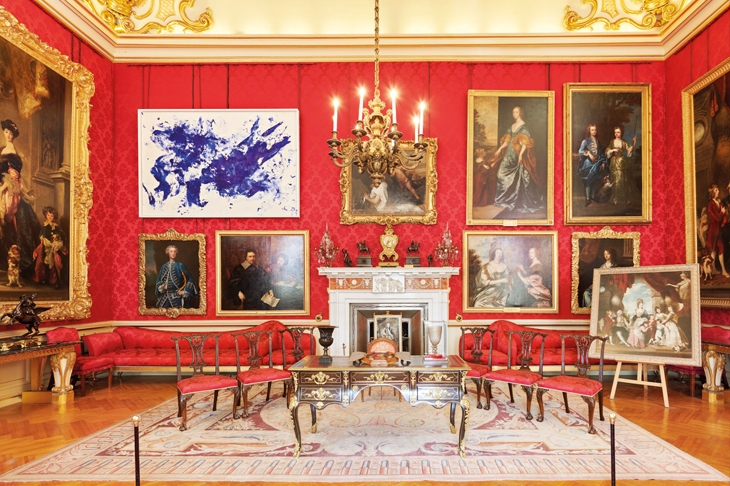Nothing was so interesting to Yves Klein as the void. In 1960 he leapt into it for a photograph — back arched, chin raised, spread-eagled. The same year, he took out a patent for International Klein Blue (IKB), a colour inspired by the limitlessness of the sky itself. He even went so far as to stage an exhibition of white walls and an empty cabinet. If there is a less appropriate place to exhibit his work than the lavishly adorned Blenheim Palace, I can’t think of it.
Klein was born in Nice in 1928 and learned judo as well as art. In his late teens he visited the Scrovegni Chapel in Padua and marvelled at Giotto’s 14th-century frescoes, particularly the ceiling, which was bluer than the deepest seas. When Klein went on to formulate his own colour in the 1950s, he retained the intensity of the pigment by ingeniously combining it with an artificial resin and petroleum rather than simply oil. The result was less a sky blue than a deep ultramarine that might have fallen straight from Giotto’s heaven.
Venus wore it best. Born in the sea and raised to the skies, she became the most iconic model of Klein’s trademarked shade. In the Saloon of Blenheim Palace there are 12 of her, cast from the Venus de Milo and doused in IKB. How incongruous they look. Behind them are 18th-century wall paintings of former statesmen. Above, on the domed ceiling, John Churchill, first Duke of Marlborough, raises his sword during the War of the Spanish Succession while Peace stays his hand. If Klein’s blue Venuses have come to promote love, not war, they are wasting their time. The duke, who received the palace from Queen Anne following his triumph in the Battle of Blenheim, might more usefully have been attended by one of Klein’s figures of the Victory of Samothrace.








Comments
Join the debate for just £1 a month
Be part of the conversation with other Spectator readers by getting your first three months for £3.
UNLOCK ACCESS Just £1 a monthAlready a subscriber? Log in